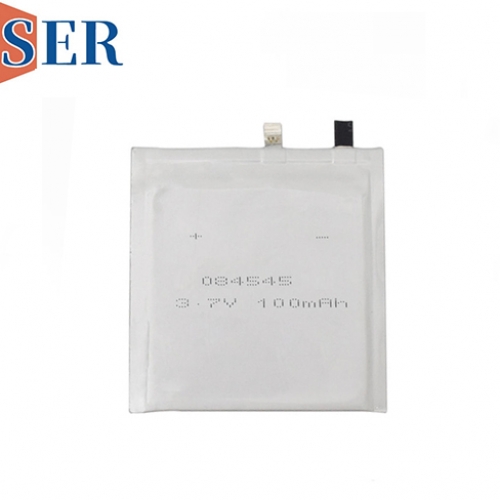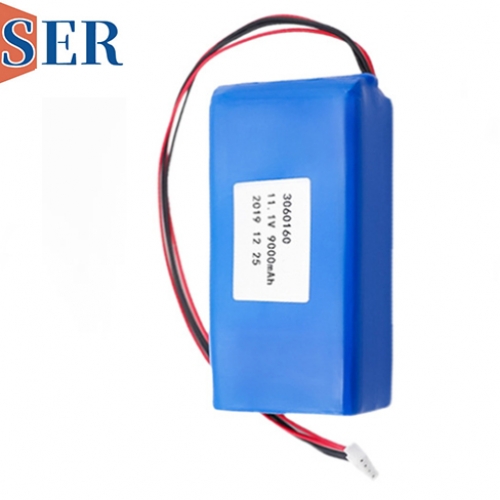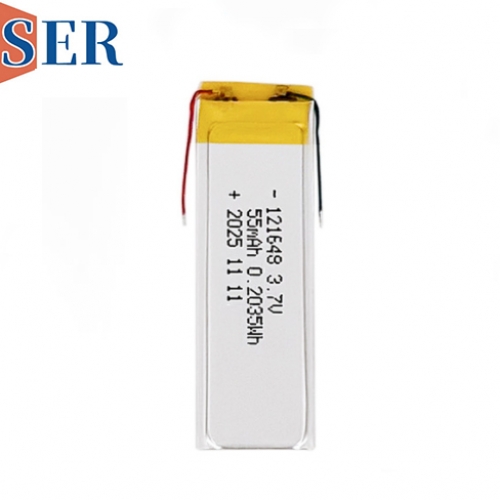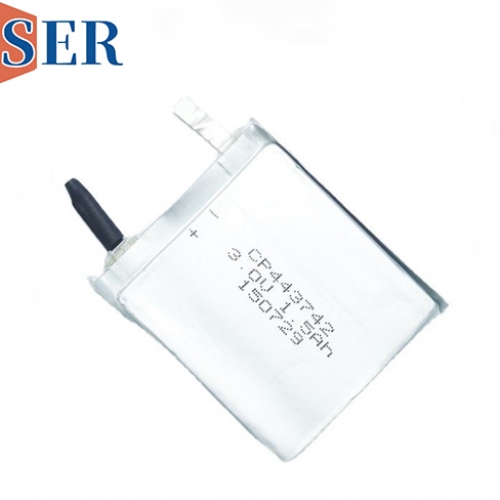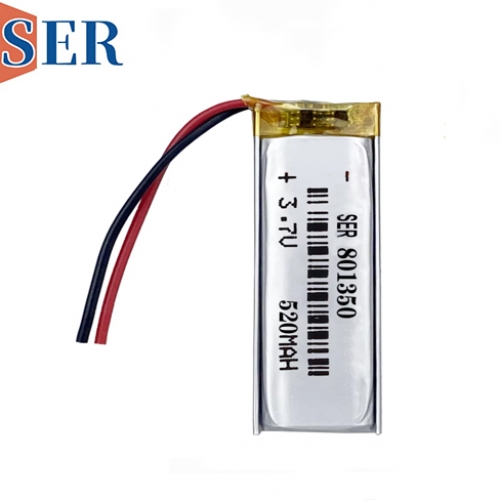Ultrathin 3.0V Primary Lithium Batteries CP155050 CP502740
Ultrathin 3.0V Primary Lithium Batteries CP155050 CP502740: Powering the Next Generation of Smart Cards and IoT Devices
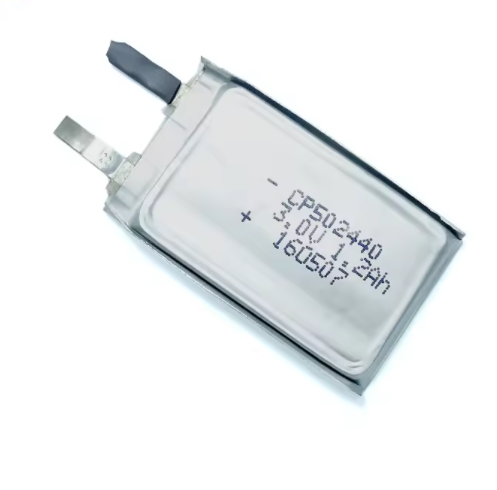
Introduction: The Critical Role of Ultrathin Primary Batteries in Modern Electronics
In an era defined by miniaturization, connectivity, and seamless user experiences, ultrathin primary lithium batteries have emerged as indispensable power sources for applications where rechargeability is impractical, and compactness is non-negotiable. Among these, 3.0V lithium manganese dioxide (Li-MnO₂) flat batteries, such as the CP155050 and CP502440, stand out for their exceptional energy density, stable voltage output, and ultra-slim profiles. Designed specifically for smart cards, RFID tags, wearable sensors, and medical implants, these ultra thin batteries exemplify how primary lithium technology is enabling the Internet of Things (IoT), secure authentication, and portable health monitoring at scale.
This article explores the science, applications, advantages, and market dynamics of ultrathin 3.0V Li-MnO₂ batteries, with a focus on the CP155050 (15.0mm × 50.0mm × 0.5mm) and CP502440 (50.0mm × 24.0mm × 0.4mm) models. By dissecting their chemical composition, performance metrics, and real-world use cases, we aim to provide a comprehensive understanding of why these batteries are critical to the future of low-power electronics.
1. Chemistry and Design: The Foundation of Ultrathin Primary Batteries
1.1 Why Li-MnO₂? The Ideal Chemistry for Thin-Form Factors
Lithium manganese dioxide (Li-MnO₂) is the chemistry of choice for ultrathin primary batteries due to:
High Energy Density: Delivers 300–350 Wh/kg, enabling compact cells with capacities up to 200mAh in sub-1mm profiles.
Stable Voltage: Maintains a near-constant 3.0V throughout discharge, critical for analog circuits in smart cards and sensors.
Wide Temperature Range: Operates reliably from -20°C to 60°C, suitable for industrial and outdoor environments.
Long Shelf Life: Self-discharge rates as low as <1% per year, ensuring 10+ years of storage without significant capacity loss.
In contrast, alternatives like lithium iron disulfide (Li-FeS₂) offer higher capacity but suffer from voltage sag, while lithium thionyl chloride (Li-SOCl₂) requires complex voltage regulation for 3.0V applications.
1.2 Layered Architecture: How Thinness is Achieved
A typical ultrathin Li-MnO₂ battery consists of the following components:
Cathode (Positive Electrode): A pressed mixture of manganese dioxide (MnO₂), conductive carbon, and a binder, coated onto an aluminum foil current collector.
Anode (Negative Electrode): A thin lithium metal foil (typically 20–50µm thick) that serves as the lithium-ion source.
Electrolyte: A non-aqueous solution of lithium perchlorate (LiClO₄) dissolved in a propylene carbonate/dioxolane solvent mixture, impregnated into a micro-porous separator.
Separator: A polyethylene or polypropylene membrane (10–20µm thick) that prevents short circuits while allowing ion transport.
Encapsulation: A laminated pouch film (aluminum + polymer layers) seals the battery, protecting against moisture and physical damage.
The CP155050 and CP502440 batteries leverage this architecture to achieve thicknesses of 0.5mm and 0.4mm, respectively, while maintaining capacities of 40mAh and 80mAh at 3.0V.
2. Key Advantages of Ultrathin 3.0V Primary Batteries
2.1 Unmatched Energy Density in Millimeter-Thin Profiles
The CP502440 battery, for example, packs 80mAh of capacity into a 50mm × 24mm × 0.4mm form factor, yielding an energy density of ~330 Wh/L. This allows it to power:
Smart Cards: EMV payment cards, national ID cards, and transit passes for 5–7 years on a single battery.
Wireless Sensors: Temperature/humidity loggers in logistics for 3–5 years with periodic data transmission.
Medical Wearables: Disposable patch-based ECG monitors for 72 hours of continuous operation.
2.2 Stable Voltage Output for Sensitive Electronics
Unlike rechargeable lithium-ion batteries, which exhibit a voltage decline from 4.2V to 3.0V during discharge, Li-MnO₂ batteries maintain a flat 3.0V profile until near depletion. This stability is critical for:
Smart Card Chips: Ensures consistent clock speeds and memory access in contactless payment systems.
Analog Sensors: Prevents calibration errors in pressure, pH, or gas sensors powered by these batteries.
Low-Power RFID: Maintains reliable communication ranges (up to 10 meters) without voltage-induced signal degradation.
2.3 Safety and Reliability in Harsh Environments
Primary Li-MnO₂ batteries are inherently safer than rechargeable alternatives due to:
Solid Lithium Anode: Unlike liquid-electrolyte Li-ion cells, there is no risk of thermal runaway or leakage.
Over-Discharge Protection: Built-in circuits disconnect the battery when voltage drops below 2.0V, preventing reverse charging.
Compliance with Standards: Meet IEC 60086-4 and UL 1642 certifications for lithium primary batteries.
2.4 Cost-Effectiveness for High-Volume Applications
While ultrathin primary batteries are more expensive per watt-hour than bulkier alkaline or Li-FeS₂ cells, their long operational life and low maintenance requirements make them cost-competitive in:
Smart Card Issuance: A 1.00 battery cost is negligible compared to the 20 value of a secured ID or payment card.
Industrial IoT: Reduces labor costs associated with battery replacements in remote sensors.
Medical Disposables: Eliminates recycling or recharging infrastructure for single-use devices.
3. Applications Driving Demand for Ultrathin Primary Batteries
3.1 Smart Cards: The Backbone of Secure Authentication
Contactless smart cards (e.g., Visa PayWave, Mastercard Contactless) rely on ultrathin 3.0V batteries to power:
Secure Element Chips: Store cryptographic keys and process payment transactions.
Antenna Circuits: Enable NFC communication at 13.56 MHz.
LED Indicators: Confirm card activation during tap-to-pay interactions.
The CP155050 battery is widely used in dual-interface smart cards, where its 15mm × 50mm × 0.5mm dimensions fit seamlessly into card bodies without adding bulk. A single battery can sustain 100,000+ read/write cycles or 5–7 years of typical use.
3.2 Asset Tracking and Logistics: Long-Life IoT Sensors
In supply chain management, ultrathin primary batteries power:
Temperature Loggers: Monitor perishable goods (e.g., pharmaceuticals, food) during transit.
Shock Sensors: Detect rough handling of fragile equipment.
GPS Trackers: Provide real-time location updates for high-value cargo.
The CP502440 battery’s 80mAh capacity enables a Bluetooth Low Energy (BLE) beacon to transmit data every 10 minutes for 3–5 years, even in sub-zero cold chain environments.
3.3 Medical Wearables: Disposable Health Monitors
For single-use medical devices, primary batteries offer:
Sterilization Compatibility: Withstand gamma radiation or ethylene oxide (EtO) sterilization without capacity loss.
Biocompatibility: Encapsulation materials resist body fluids in patch-based monitors.
Low Leakage Current: <0.1µA quiescent current ensures minimal self-discharge during storage.
Examples include:
Electrodermal Activity (EDA) Sensors: Detect stress levels via skin conductance.
Single-Lead ECG Patches: Monitor heart rhythms for arrhythmia detection.
Wound Healing Sensors: Track moisture and temperature in chronic wounds.
4. Challenges and Limitations of Ultrathin Primary Batteries
4.1 High Upfront Cost vs. Rechargeable Alternatives
Ultrathin primary batteries cost 2.00 per unit in high volumes, compared to 0.50 for coin-cell rechargeable Li-ion batteries. This makes them less attractive for:
Consumer Wearables: Smartwatches and fitness trackers demand rechargeable solutions for user convenience.
High-Drain Devices: Drones or power tools require batteries with >1A discharge currents, which primary Li-MnO₂ cells cannot provide.
4.2 Environmental Concerns: Disposal and Recycling
Lithium primary batteries contain toxic heavy metals (e.g., cobalt in some MnO₂ formulations) and are not rechargeable, leading to:
Landfill Waste: An estimated 3 billion primary batteries are discarded annually worldwide.
Recycling Complexity: Few facilities process lithium primary cells due to low economic value compared to Li-ion.
Manufacturers are addressing this by:
Cobalt-Free Cathodes: Using manganese-rich formulations to reduce toxicity.
Take-Back Programs: Partnering with retailers to collect used batteries for safe disposal.
4.3 Limited High-Temperature Performance
While Li-MnO₂ batteries operate well up to 60°C, prolonged exposure to >85°C (e.g., in automotive or industrial settings) can cause:
Electrolyte Decomposition: Reduces capacity and increases self-discharge.
Separator Melting: Risk of internal short circuits.
For such applications, Li-SOCl₂ or thermal batteries (activated by heat) are preferred despite their higher cost.
5. Future Innovations: Enhancing Performance and Sustainability
5.1 Hybrid Primary-Rechargeable Designs
Researchers are developing "partial rechargeability" in primary cells by:
Lithium Titanate (LTO) Anodes: Allow limited recharging (10–100 cycles) without safety risks.
Dual-Chemistry Systems: Combine Li-MnO₂ for long-term storage with a secondary rechargeable chemistry for short bursts of power.
Such innovations could extend the life of smart cards by enabling field-updatable firmware without battery replacement.
5.2 Solid-State Electrolytes for Thinner Profiles
Replacing liquid electrolytes with inorganic solid-state materials (e.g., Li₃PS₄) could enable:
Thickness reduction: Below 0.3mm for next-gen smart cards.
Improved safety: Eliminate leakage risks in flexible electronics.
Higher Voltage: Support for 3.6V systems to reduce component count.
Startups like Ionic Materials and QuantumScape are pioneering solid-state primary batteries, with commercialization expected by 2025–2030.
5.3 Sustainable Materials and Recycling
To address environmental concerns, manufacturers are exploring:
Biodegradable Casings: Polymers derived from corn starch or cellulose for compostable packaging.
Direct Recycling: Shredding used batteries to recover lithium and manganese for new cells.
Cobalt-Free Cathodes: Manganese-rich formulations (e.g., LiMn₂O₄) to reduce reliance on conflict minerals.
6. Market Outlook: Growth Drivers and Projections
The global ultrathin primary battery market is projected to grow at a CAGR of 8.5% from 2023 to 2030, reaching $1.2 billion by decade’s end. Key drivers include:
Smart Card Adoption: Contactless payment cards to surpass 10 billion units annually by 2027.
Industrial IoT Expansion: 50 billion connected devices by 2030, many requiring long-life primary batteries.
Medical Wearables Boom: Disposable patches for remote patient monitoring to grow at 12% CAGR through 2030.
The CP155050 and CP502440 batteries will remain dominant in these segments due to their balance of size, capacity, and cost, though new chemistries may emerge for niche applications.
Conclusion: Ultrathin Primary Batteries as Enablers of a Connected, Secure World
Ultrathin 3.0V Li-MnO₂ primary batteries, such as the CP155050 and CP502440, represent a technological sweet spot where miniaturization meets reliability. By delivering stable voltage, long shelf life, and exceptional energy density in millimeter-thin profiles, these batteries power the smart cards, IoT sensors, and medical wearables that define modern life.
While challenges like cost and recyclability persist, ongoing innovations in solid-state electrolytes, hybrid designs, and sustainable materials promise to overcome these hurdles. As the world becomes increasingly wireless and autonomous, ultrathin primary batteries will remain indispensable—quietly powering the devices that keep our identities secure, our supply chains efficient, and our health monitored.
For engineers and product designers, the message is clear: to unlock the full potential of low-power electronics, start with the battery. By selecting the right ultrathin primary chemistry—whether Li-MnO₂, Li-SOCl₂, or emerging alternatives—they can create devices that are not just smaller and lighter, but smarter and more sustainable, ensuring a seamless user experience from first use to last.

